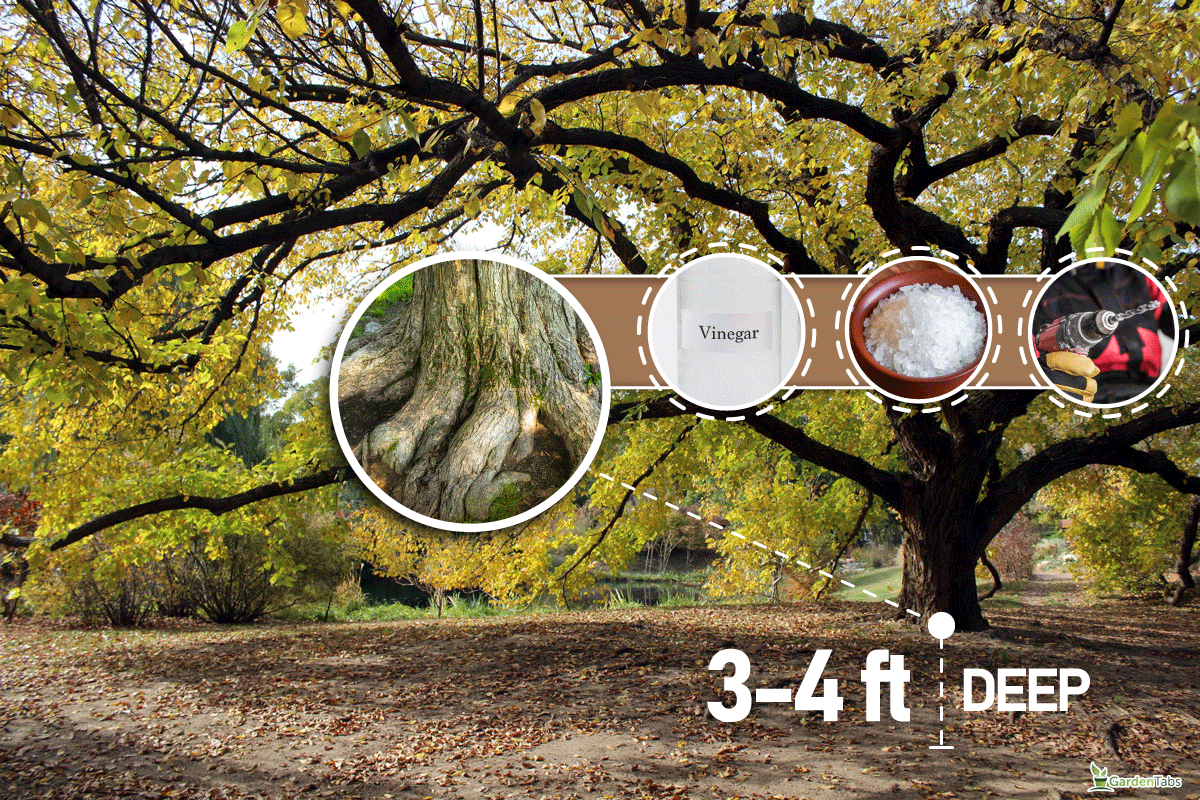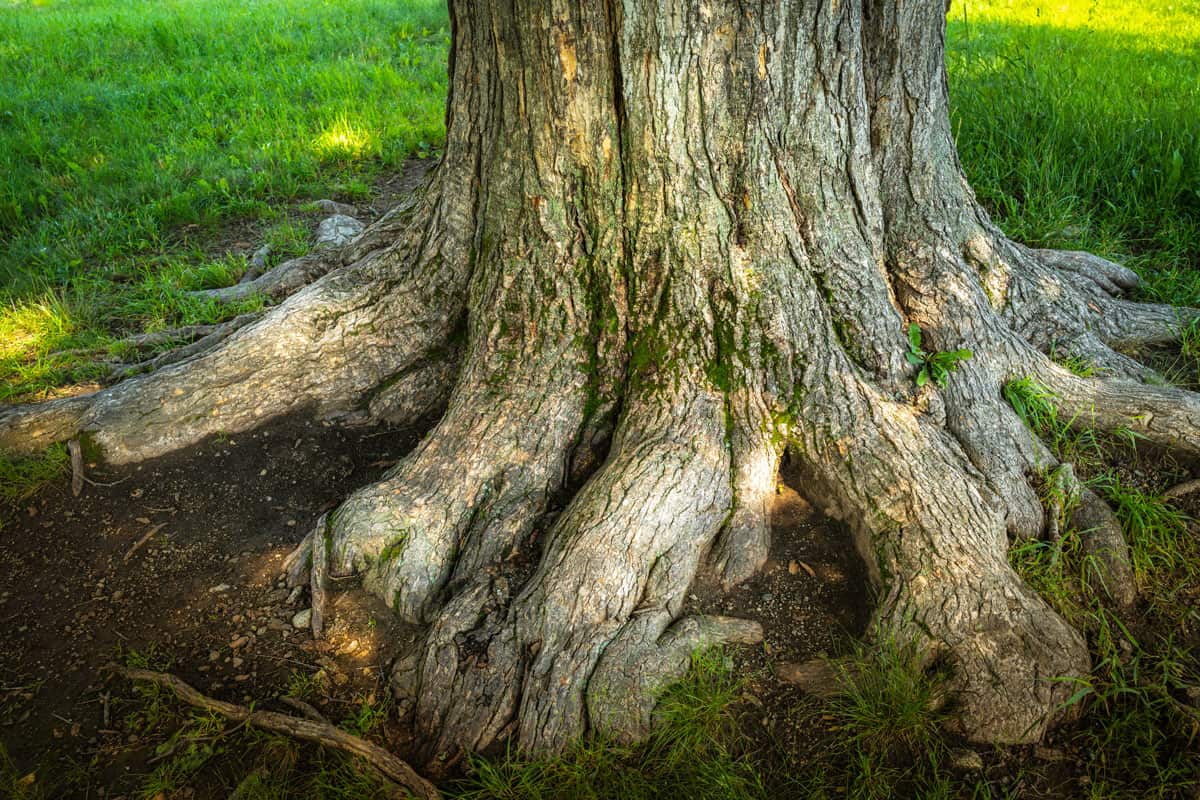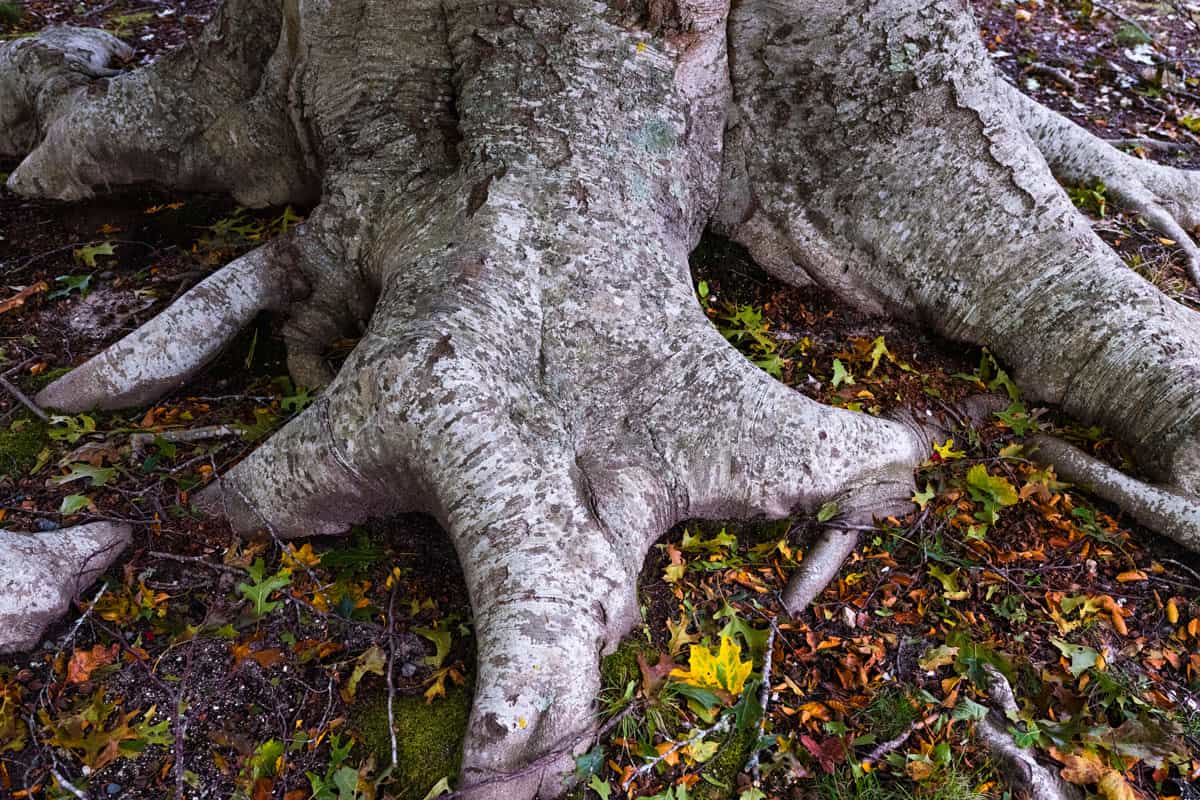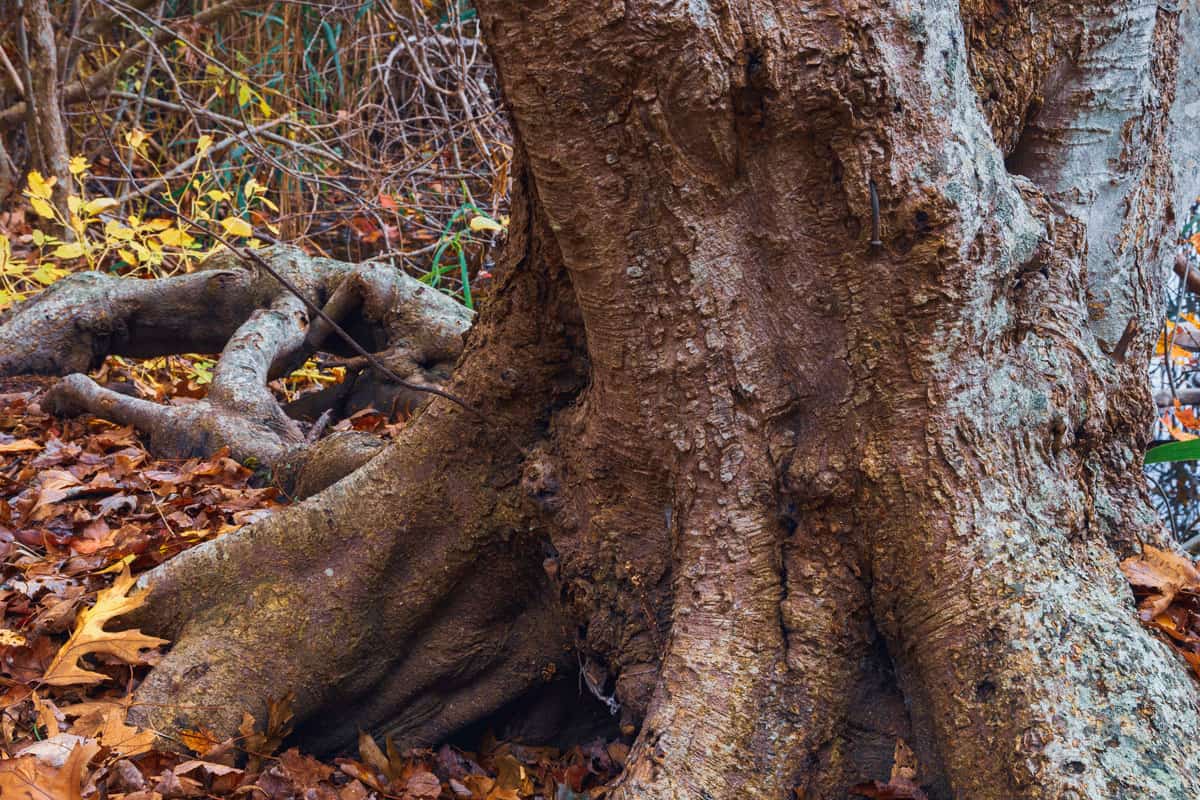Removing a tree from your garden can sometimes be easier said than done. For example, do you have an elm tree you recently pulled out of the ground or cut down but still notice its roots are left behind? What is the best way to get rid of elm tree roots for good?
Luckily, we've done plenty of research and have the answer below!
The best way to get rid of elm tree roots is to apply salt and vinegar to them. You can also drill holes in the leftover elm roots and pour your mixture or use boiling water on them.
Generally, elm roots are 3-4 feet deep and about as wide as your tree, so removing them will take time. You might even want to apply an herbicide to your tree's roots to kill them, although this isn't usually required.
As we start this post, we will cover all things elm trees and discuss how to get rid of their roots. Whether you just chopped down your elm, are struggling with its roots, or need more help, we've got your back. With that said, let's dive right into this topic!
How Can I Get Rid Of Elm Tree Roots?

If your elm tree left behind an expansive root system, the first thing to do is assess its size. An elm tree typically has shallow roots, reaching 3-4 feet into the ground.
However, in dry areas, the roots of your tree may go down as far as 6+ feet. In that situation, you'll need to get heavy-duty equipment and dig up the remaining roots from your elm.
For smaller roots, you can try our methods above, including pouring vinegar, salt, and boiling water onto the ground where your roots are located.
Some experts recommend drilling holes into the larger sections of your leftover elm and pouring the salt and vinegar mixture inside. This essentially shocks the roots, killing them faster.
Again, you don't always need a drill, but creating holes for the mixture to go down will make the process more effective. Tree roots can be tough to get rid of, even once the tree is gone.
You might need a fast-acting herbicide for harder-to-kill elm roots, so don't put that off the table.
Are Elm Tree Roots Hard To Kill?

As long as your elm tree roots are normal depth and spread, they won't be hard to kill. As we covered above, most elm root systems won't expand more than 3-4 feet into the soil.
Therefore, using a chemical or salt, vinegar, or boiling water should do the job. According to tree experts, you might consider a fast-acting herbicide like Tordon.
This herbicide targets and kills the entire root system of a tree, which is perfect for elms. Most times, herbicides will get rid of roots and even stumps after a few applications.
In addition, it might be a good idea to apply your chemical during the fall, just before your elm goes dormant. Many landscapers hold off on killing roots until the late fall, as they're more susceptible to the herbicide.
Of course, if you have already cut down or removed your elm tree and want the roots gone ASAP, don't be afraid to try this any time of the year. You want to work fast to prevent resprouting.
Tordon RTU Specialty Herbicide
This herbicide is fast-acting, targets tree roots, keeps more than 20 woody species away, prevents sprouting, won't freeze, doesn't need mixing or measuring, and comes in a one-quart bottle.
Follow this link to check it out on Amazon.
How Long Does It Usually Take To Kill Elm Roots?

How you decide to kill an elm tree can also affect how long it will take to kill its roots. Most times, elm tree roots aren't aggressive or too deep, making them easier to kill.
However, this tree species does have a tendency to resprout once you cut it down, which can complicate this process. For example, if you decide to girdle your elm tree (cutting or chopping away the outer bark and the inner bark or cambium), that can take two years.
On the other hand, if you use an herbicide on your tree stump or roots, they should die within a few weeks. Timelines will vary depending on the weather, tree age, and application.
You can also expect pouring vinegar, salt, or boiling water to take a few weeks. Luckily, if you have already chopped down the elm, its roots won't know where to send energy and nutrients, so they'll already be confused.
That's when you want to go in, digging them up as much as you can. Usually, the more roots you can dig from the soil, the less likely your elm is to resprout.
Do Elm Trees Have Invasive Roots?
In general, an elm tree shouldn't have invasive roots. However, invasive behavior is possible if your tree isn't in good soil or competes with other nearby trees and plants for nutrients and water.
Luckily, your elm tree shouldn't sprawl out too much if it decides to grow more invasively. As we said, in dry soil, an elm's roots might extend down to six or more feet in the form of a taproot.
That said, your elm tree's roots might go even farther than six feet, closer to ten. In that case, you want to hire a professional to dig the entire system from the soil or use a lot of herbicide.
One of the main reasons people have to remove elm trees is because their roots stay shallow, extending in all directions to nearby foundations and structures.
If your tree isn't happy with its soil conditions, there is a chance it will find the foundation of your house. That can cause cracked walls, broken pipes, and other severe damage.
So try to see how your tree is behaving; if its roots are spreading, it likely needs better soil/water.
Read our post: Do Cedar Elm Trees Have Invasive Roots? [And Where To Plant Them] for more.
Will A New Elm Tree Grow From The One I Removed?

Yes, it is possible to see a new elm tree sprout from where you removed the first one. Like most trees, elm roots will try and create another plant if you cut down the first.
However, you should be able to get ahead of this with herbicide if you see sprouting. During your root-killing process, it is normal for sprouts to appear.
Add more product to the area when this occurs, killing the sprout and roots. Remember, the faster you tackle a tree stump or leftover roots, the fewer chances of a new tree forming.
According to New Mexico State University, your tree's stump is the most likely place where this will happen. If you removed the stump of your tree, sprouting isn't as probable: but again, anything can happen.
Especially if it's a nice time of year, like spring or summer, your elm tree will be more viable against your removal efforts. Luckily, most treatment plans for remaining tree roots work in a week or two, so the sprouts won't be able to grow too large.
If An Elm Tree Dies, Will Its Roots Die Too?
Most often, yes. When you cut down or remove an elm tree from its location, the roots will eventually stop growing and living. That said, this can take additional time, even if you have already killed the tree.
Remember, the root system of an elm tree spans in either direction and down into the soil. Therefore, you can't expect it to die when you cut down the elm.
Soon after you kill the elm tree or it dies, the roots will notice something is off. They won't know where to send water and nutrients, essentially going into overload.
From that point, your elm's roots stop growing and eventually decompose in the soil. According to Midland Daily News, as your tree roots die, they'll create cavities or "soft spots" in the ground nearby.
So, this entire process can be months on end if you don't do anything, and it could even result in a new tree growing. That's why it is a good idea to use vinegar, salt, boiling water, or herbicide for your elm's roots.
What Is The Best Time To Remove Elm Trees?

When it comes to the best time to remove an elm tree, this can vary depending on your plant's health. For example, if your elm tree becomes sick and threatens nearby trees/plants, you want to remove it as soon as possible.
Sometimes, elm trees will contract diseases from fungi or pests. The same illness or infestation will spread when your tree dies to its next victim.
Therefore, regardless of the month or season, you need to get ahead of this. With that said, your elm tree will be slower growing towards the fall and winter, making that an excellent time to remove it.
If your tree is simply in the way or you want to use it for wood, you should be able to easily cut it down and kill the roots around November and December.
To Wrap It Up
Whether you need to remove an elm tree or already have, you'll likely run into leftover roots. Generally, you can kill these by pouring salt, vinegar, or boiling water onto them.
Some gardeners drill holes into larger sections of their leftover trees to make room for these killers. Furthermore, you might want to use an herbicide on more intricate elm roots that go deep into the soil.
Nonetheless, we recommend creating a game plan and ensuring you kill any sprouts you see.
Made it to the end? Check out these helpful related garden articles below:
What To Plant Under Elm Trees [5 Great Options!]
How Fast Do Elms Grow And How Long Do They Live? [By Type Of Elm]

